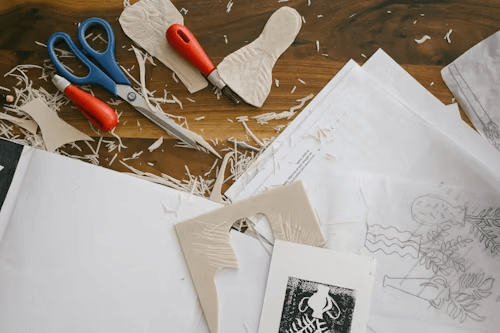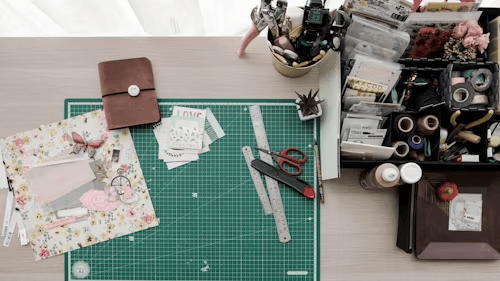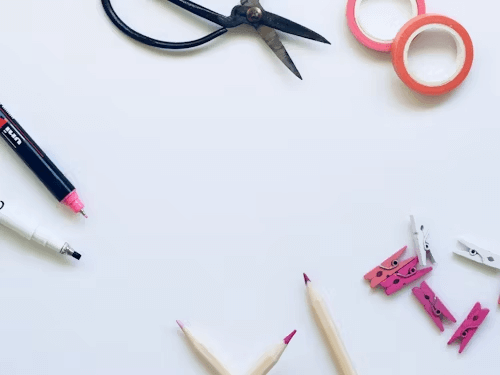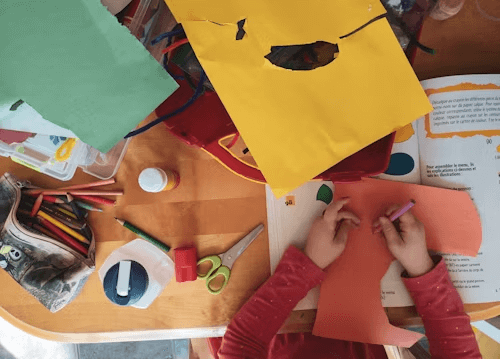Comprehensive Guide To Card Crafting For Beginners
For many, handmade cards are a lost art. In this busy, tech-obsessed world, it’s easy to grab a generic greeting card from the store instead of taking the time to craft something personal. However, card-making is enjoying a resurgence as people seek creative outlets and ways to connect through artisanal gifts.
Suppose you’re interested in starting your card crafting hobby but feel intimidated by the endless array of tools and techniques; fear not! With just a few supplies and a little practice, anyone can craft beautiful, sentimental cards that will bring joy to the recipients.
Here is a beginner’s guide to getting started with card making.
1. The Basics
Basic card crafting necessities are few and affordable. Lighter weight cardstock in varied hues lay the groundwork. Craft glue or double-sided tape adhere elements. Scissors shape layers and motifs. Decorative tape, ribbon, buttons and stickers enliven designs. An affordably-priced plastic bone folder scores clean folds. Gel pens, colored pencils or fine-tip markers lend messages vibrancy. Such simple supplies empower beginning crafters to creative expression.
2. Start Simple
When you’re just getting the hang of card crafting, less is more. Focus on clean, basic designs that highlight favorite colors and patterns over complicated constructions. Classic folded or tri-fold styles are good entry points. Cut strips or shapes from patterned paper and adhere them around the front of a white or solid card base for an eye-catching layered look.
Draw or print simple illustrations and cluster them with text for a charming handmade feel. Layering washi or decorative tape in stripes or chevrons adds visual interest without effort.
A popular starting size for homemade cards is A5, which measures approximately 6 inches by 8.3 inches. It lends itself to a variety of folding and assembly techniques, from simple to more complex designs, as skills progress without the risk of tearing.
The durability means A5 card will hold its shape for display even if it’s handled repeatedly. Henceforth, exceptional quality enables learners to focus on developing skills without worry that an imperfect attempt will be unusable.
3. Practice Techniques
Take time to familiarize yourself with tools and essential techniques through low-stakes practice. Score and fold sample cardstock into different styles, like an accordion or gatefold, until creases are sharp. Play around with different gluing methods—lines, dots, or zig-zags, depending on the materials. Work on neat hand-lettering of messages or quotes until you find a writing implement and style you like.
Try freehand cutting shapes or use stencils and die cuts for precision. Take photos of successful trial cards for inspiration down the line. Developing technical skills through relaxed experimenting builds confidence.
4. Capture Personality
The magic of handmade cards is their personal touch. Try embellishing standard templates or designs with meaningful details that reflect the recipient. Include inside jokes, favorite colors, hobbies or meaningful images, songs, or places you associate with that person.
Customizing each card makes it a thoughtful gift instead of a throwaway item. You could tie in their passions by crafting a nature scene for an outdoor enthusiast or decorating with musical notes for someone who plays an instrument. Cards tailored to unique relationships show you care through little acts of creativity.
5. Save Stamps and Stencils
Card crafters quickly accumulate supplies, so it’s wise to categorize and store materials neatly for future inspiration. Invest in divider storage bins or craft shelves. Keep patterned paper strips, foil sheets, washi tape, and ribbon organized by color. File away popular reusable elements like die cuts and stencils in plastic pages.
Taking the time to save and catalog components neatly pays off since you’ll constantly return to furbishing pre-loved materials and turn them into new designs down the line. Order lends itself to ease of refreshing motifs seasonally or for particular occasions with materials at hand.
6. Bring Joy Through Caring Acts
At its heart, card crafting cultivates acts of care, creativity and community. Each handmade gift carries the maker’s spirit of generous intentions for another’s day. Homemade cards remind loved ones they’re continually held in thought during daily routines and harried schedules. Exchanging or distributing cards extends comfort through dark times or congrats through bright ones.
Participating in events that share cards society-wide, like nursing home visits, children’s hospitals, or events for marginalized groups, allows your talents to cheer beyond close circles. Nothing gives joy quite like gestures that show another they matter, which crafted cards have the power to convey every time.
Conclusion
Cardmaking begins with basics but blossoms over time into a medium of personal expression and community. Start simply with templates on forgiving materials to build skills through regular practice.
Celebrations will be brightened by one’s thoughtful, customized designs reflecting unique relationships. An open and playful attitude nurtures appreciation for meaningful connections through acts of kindness, large and small. Does not cultivating this craft strengthen relationships while bringing sustained satisfaction?
























